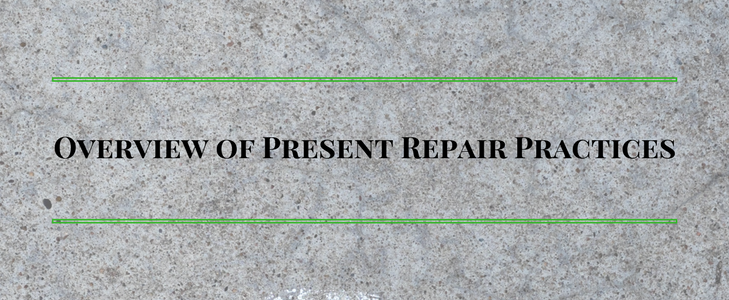Overview of Present Repair Practices
Since 1950s, the construction activity has been increasing geometrically without matching increase in the availability of quality inputs, in terms of materials and skilled workmen. The gap between the quality planned and the quality achieved continues to become wider. The factors contributing to damages/distresses in buildings have, thus, become intrinsic right from the construction stage. Often these are concealed under external renderings and the defect takes time to manifest itself.
Construction documents contain adequate specifications and instructions required to execute quality works. However, they remain as written document without achieving the desired level of results, because of lack of understanding of their significance by the field engineers. Standard cube test results are taken as a measure of quality in the construction. Whereas the factors such as method of placing, compaction and curing of concrete, which have significant influence on the quality achieved in the hardened concrete, are given scant attention. Many a times, the quality of concrete as placed and hardened in position has no correlation to the cube test results, which are used for quality control measures.
Procedures, mandatory or otherwise, for periodic inspection of buildings and structures and documenting defects, like cracks, excessive deflections, corrosion of reinforcement etc., in logical manner, and recording of structural repairs already carried out, are generally not followed or maintained. In some buildings, only visual inspection is carried out for preparing maintenance budget estimates and this exercise is often left to the engineers who have no experience in such problems.
Concrete constructions require proper care in the form of regular maintenance. Buildings remain for several years without getting due attention. Water stagnation, paint pealing, plaster break- off, fungus growth, cracking of external rendering and cover concrete are common and widespread. Penetration of moisture into reinforced concrete components promotes corrosion process and further damages the concrete cover.
The engineers responsible for maintaining buildings often begin repair activity without adequate understanding of the factors responsible for the defects. The repairs strategy adopted is replacement of damaged materials without dealing with the real problems. Many engineers unintentionally attempt treating the symptoms, instead of dealing with the cause and effect phenomenon. Such an approach may offer a quick action with minimum inconvenience to the occupants. But in this process, there is a strong possibility that the source and cause for the distress remain unattended and continue to cause problem even after the superficial repairs have been executed. If structural defects are dealt with in this fashion, it remains only as defects camouflaged beneath finishes, which gives a false sense of safety to the occupants allowing the problem to continue without getting treated. A rational approach to any repair and rehabilitation work is to consider the source of the problem and the symptoms together.
